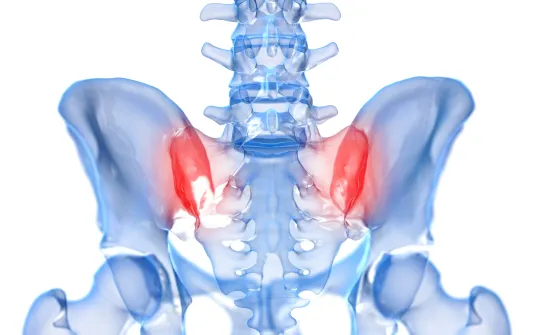
SI Joint Surgery
Minimally Invasive SI Joint Surgery Using the iFuse Implant System
If you are experiencing acute pain or discomfort in your lower back and pelvic region due to SI joint dysfunction, and all conservative or non-surgical treatment options have failed to provide relief, surgery may be necessary. Dr. Robert Josey or Dr. Michael Moghimi, are the spine specialists at the Orthopaedic Specialists of Austin in Austin, TX, offers minimally invasive SI joint surgery using the iFuse system. This procedure uses special titanium implants to stabilize the SI joint. It requires minimal incisions and involves a relatively short recovery.
Benefits of the iFuse System
There are several advantages associated with the iFuse system:
- Smaller incisions
- Reduced blood loss
- Minimized tendon irritation
- Minimized soft tissue damage
- Quicker recovery
iFuse Implant System Candidacy
During an initial consultation with Dr. Josey or Dr. Moghimi, he will conduct a thorough evaluation to identify the cause of your pain. If SI joint pain is confirmed as the cause, he can recommend an appropriate treatment.
Non-surgical care includes physical therapy, medications, and steroid injections. If these options do not provide relief, Dr. Josey or Dr. Moghimi may recommend SI joint fusion using the iFuse system. However, this procedure may not be suitable for everyone, and candidacy must be individually determined by conducting a careful analysis of your health history and current state of health.

The Procedure
The patented iFuse system is a minimally invasive alternative to traditional SI joint fusion surgery. It uses small triangular titanium implants to stabilize and fuse the sacroiliac joint.
The procedure takes about an hour. Three implants are placed across the SI joint. Dr. Josey or Dr. Moghimi will make a small incision along the side of the buttock through which the implants are inserted.
During the procedure, Dr. Josey and Dr. Moghimi uses fluoroscopy to guide placement of the implants. Though three implants are typically required, this number may vary according to the patient's needs. Patients generally spend one night in the hospital after surgery and can return home the next day.
Recovery
Dr. Josey or Dr. Moghimi will generally recommend that patients use crutches or a walker for a few weeks after surgery to avoid placing pressure on the SI joint. He will also provide specific instructions about avoiding strenuous exercise and limiting certain activities for the first six weeks after your surgery. Dr. Josey will also schedule a postoperative appointment to assess your progress. Patients should not smoke during the recovery period, as it impairs successful bone growth and fusion. Dr. Josey will conduct periodic checkups to monitor your recovery.